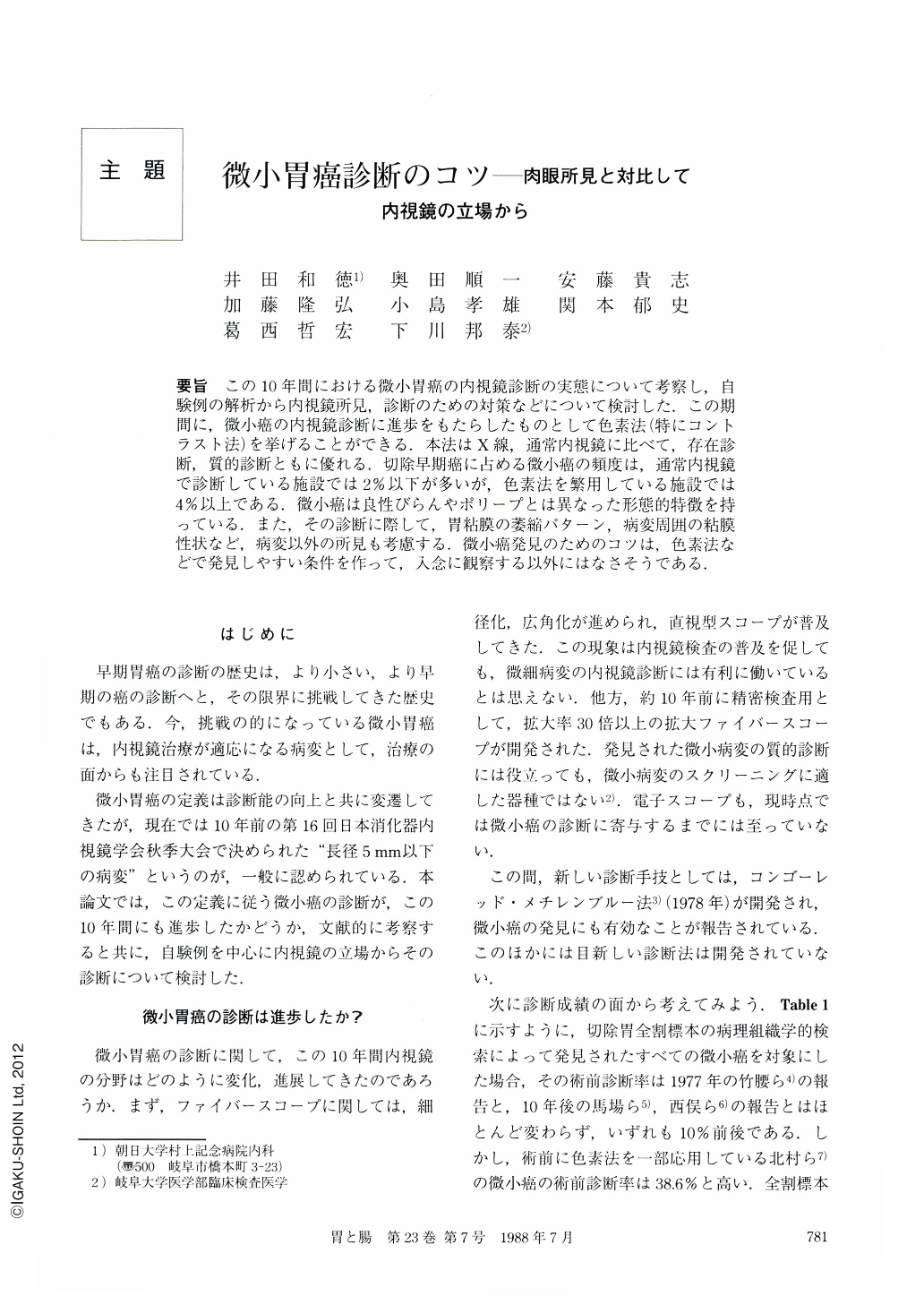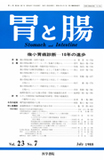Japanese
English
- 有料閲覧
- Abstract 文献概要
- 1ページ目 Look Inside
- サイト内被引用 Cited by
要旨 この10年間における微小胃癌の内視鏡診断の実態について考察し,自験例の解析から内視鏡所見,診断のための対策などについて検討した.この期間に,微小癌の内視鏡診断に進歩をもたらしたものとして色素法(特にコントラスト法)を挙げることができる.本法はX線,通常内視鏡に比べて,存在診断,質的診断ともに優れる.切除早期癌に占める微小癌の頻度は,通常内視鏡で診断している施設では2%以下が多いが,色素法を繁用している施設では4%以上である.微小癌は良性びらんやポリープとは異なった形態的特徴を持っている.また,その診断に際して,胃粘膜の萎縮パターン,病変周囲の粘膜性状など,病変以外の所見も考慮する.微小癌発見のためのコツは,色素法などで発見しやすい条件を作って,入念に観察する以外にはなさそうである.
The correct diagnosis of minute gastric cancer is still very difficult. Dye spraying method, especially contrast method makes it easier than conventional endoscopy and x-ray examination to diagnose minute cancers, because it makes their morphologic characteristics more defined.
Among resected minute or early gastric cancers it was found that more than 4% of them had been detected using dye spraying method, while less than 3% of them had been detected using conventional endoscope, so the detection rate using the dye spraying method is higher.
Under the contrast method, minute cancers show characteristic findings. For example, the eroded lesions show irregular, not edematous, margins, red granules on the margin, and uneven bottoms. Polypoid lesions show an uneven surface. However, such findings are infrequent in benign polyps and erosion.

Copyright © 1988, Igaku-Shoin Ltd. All rights reserved.


